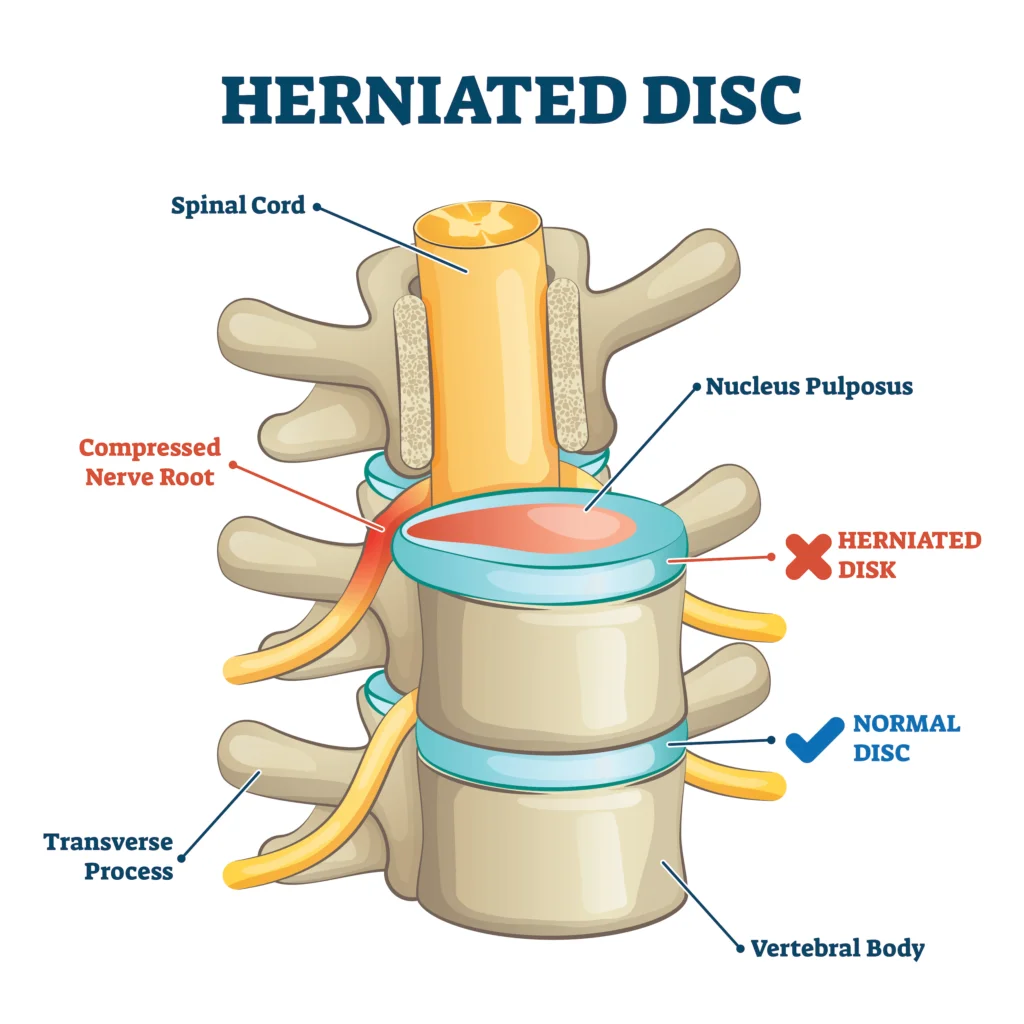Pelvic pain is a common yet often misunderstood issue for many women. It’s one of those health concerns that can be difficult to discuss, yet it can significantly impact your daily life. From sharp pains to dull aches, understanding the root cause is important to finding long-lasting relief. One surprising culprit behind this discomfort can be sciatica nerve pain. Yes, you read that right.
Let’s delve into what pelvic pain is, why it occurs, and, most importantly, what you can do about it.
What is Pelvic Pain?
Pelvic pain, often felt as a throbbing, aching, or sharp pain in the lowest part of the abdomen and pelvis, can result from various conditions. These include endometriosis, interstitial cystitis, and even conditions related to the digestive or urinary systems. However, one lesser-known cause is the irritation of the sciatic nerve, which can lead to what’s known as sciatica nerve pain. If you understand these causes, you can take control of your health and seek the right treatment.
Sciatica Nerve Pain: A Hidden Cause

Sciatica nerve pain is commonly linked to lower back pain but can also lead to significant discomfort in the pelvic area. This condition occurs when the sciatic nerve extends from the lower back through the hips and buttocks and down each leg and becomes irritated or compressed. The outcome is often a sharp, burning, or shooting pain affecting the lower back, hips, and pelvic region.
Symptoms of Sciatica Nerve Pain
Identifying the symptoms of sciatica nerve pain is essential before beginning treatment. Key indicators include:
- Persistent pain on one side of the buttock or leg
- Increased pain when sitting
- A burning or tingling sensation down the leg
- Weakness, numbness, or difficulty in moving the leg or foot
- Intense pain that may hinder standing or walking
These symptoms can sometimes be mistaken for other conditions, which is why it’s essential to get a proper diagnosis.
Why Does Sciatica Nerve Pain Occur?

Sciatica nerve pain usually happens due to a herniated disk, bone spurs on the spine, or narrowing of the spine (spinal stenosis) compressing part of the nerve. This causes inflammation, pain, and often some numbness in the affected leg. But how does this relate to pelvic pain? The sciatic nerve passes near many of the muscles and structures in the pelvic region, meaning that irritation or compression of this nerve can easily translate to pain in the pelvis.
Finding Relief: Effective Treatments for Sciatica Nerve Pain
There are several effective treatments available for sciatica hip pain relief. The key is to find what works best for your specific situation.
Here are some strategies:
Physical Therapy: Addressing the Root Cause of Sciatica Nerve Pain
Physical therapy is one of the most effective ways to treat sciatica nerve pain. It stands out because it targets the root cause of the pain rather than just focusing on the symptoms to mask them. A skilled physical therapist will assess your particular case and design a comprehensive treatment plan that includes exercises and stretches aimed at addressing the underlying issues contributing to your pain.
Holistic Approach to Sciatica Pain Relief
Physical therapy is often considered a holistic approach to treating pelvic pain. Instead of relying solely on medications that provide temporary relief, physical therapy works on improving the overall health of your muscles, joints, and spine. This all-inclusive approach ensures that you not only get relief from the existing pain but also prevent future occurrences.
Physical Therapy for Hip Pain

One of the primary areas that physical therapy focuses on is hip pain. The hips play a crucial role in supporting the spine and facilitating movement. Targeted exercises for hip pain can help alleviate discomfort and improve the stability and strength of your hip muscles. This is particularly important in sciatica pain treatment because tight or weak hip muscles can contribute to pelvic pain and exacerbate sciatica nerve pain. Some of the exercises that may be included are:
- Hip Flexor Stretches: These stretches help relieve tension in the hip flexors, which can be a source of pain.
- Glute Bridges: Strengthening the gluteal muscles can provide better support for the lower back and reduce pressure on the sciatic nerve.
- Piriformis Stretch: The piriformis muscle can sometimes irritate the sciatic nerve, and stretching it can help alleviate this irritation and relieve hip pain.
Physical Therapy for Lower Back Pain

Lower back pain is another common issue that physical therapy addresses. Strengthening the lower back muscles is crucial because these muscles support the spine and help maintain proper alignment. When these muscles are weak or tight, they can contribute to sciatica nerve pain. Physical therapy for lower back pain may include:
- Core Strengthening Exercises: Strengthening the core muscles helps support the spine and reduces the load on the lower back.
- Lumbar Stabilization Exercises: These exercises aim to improve the stability of the lower back, reducing the risk of injury and pain.
- Stretching Routines: Regular stretching can help maintain flexibility in the lower back and prevent muscle tightness that can irritate the sciatic nerve.
Manual Therapy Techniques
Along with exercises and stretches, physical therapy also includes manual therapy techniques for sciatica pain treatment. These hands-on techniques can help reduce pelvic pain and improve mobility by:
- Mobilizing Joints: Gentle movements of the joints can help improve their function and reduce stiffness.
- Soft Tissue Mobilization: Techniques such as massage can help relax tight muscles and improve blood flow to the affected areas.
- Trigger Point Therapy: This involves applying pressure to specific points in the muscles to relieve pain and improve function.
Education and Self-Management
A crucial aspect of physical therapy is education. Your therapist will teach you about the mechanics of your body and how to maintain a healthy posture and movement patterns. This knowledge empowers you to use sciatica pain treatment to manage your condition effectively and prevent future pain episodes. You will learn:
- Proper Body Mechanics: Understanding how to move and lift properly to avoid putting undue stress on your back.
- Ergonomic Adjustments: Make changes to your work and home environments to support better posture and reduce strain.
- Home Exercise Programs: A set of exercises and stretches that you can perform at home to maintain the progress made during therapy sessions.
Lasting Relief Through Physical Therapy
Physical therapy provides a comprehensive and effective solution for sciatica pain relief by addressing the root cause of sciatica nerve pain. It not only alleviates current symptoms but also helps prevent future pain by strengthening muscles, improving flexibility, and educating patients on proper body mechanics. If you are struggling with sciatica nerve pain or pelvic pain, consider consulting a physical therapist who can tailor a treatment plan to your specific needs and help you achieve long-term relief.
Medications
Over-the-counter pain relievers like ibuprofen or acetaminophen can help reduce inflammation and ease the pain. In some cases, your doctor might prescribe stronger medications. However, these medications only offer temporary relief as they do not treat the root cause of the pain.
Self-Care Tips for Managing Sciatica Pain
Alongside professional sciatica pain treatment, there are several self-care strategies you can implement at home:
- Stay Active: While it might be tempting to rest all day, gentle activities like walking or swimming can help keep your muscles flexible and reduce pain.
- Heat and Ice: Applying heat or ice packs to the affected area can help reduce inflammation and ease pain.
- Proper Posture: Maintaining good posture can help reduce the strain on your lower back and prevent sciatic nerve irritation.
When to See a Doctor

If you’ve tried self-care measures and still experience significant pelvic pain, it’s time to see a doctor. Persistent or severe pain, weakness, numbness in your legs, or loss of bladder or bowel control are signs that you need immediate medical attention.
Take Control of Your Pelvic Pain
Dealing with pelvic pain can be challenging, but understanding the potential link to sciatica nerve pain can open up new avenues for treatment and relief. Remember, you don’t have to suffer in silence. Effective treatments are available, and professional healthcare help can improve your quality of life.
Find Relief with Synergy Rehab
At Synergy Rehab in Southfield, Michigan, we specialize in treating conditions like sciatica nerve pain and pelvic pain. Our team of experienced physical therapists creates a personalized treatment plan to help you achieve long-lasting relief. Don’t let pain hold you back any longer.
Contact us today to schedule your consultation and start your journey toward a pain-free life.
FAQs About Sciatica Nerve Pain
1. Can pregnancy cause or worsen sciatica nerve pain?
Yes, pregnancy can cause or worsen sciatica nerve pain. The growing uterus can put pressure on the sciatic nerve, and hormonal changes can lead to increased joint and muscle tension, which may exacerbate sciatica symptoms.
2. Is sciatica nerve pain more common in women than in men?
Sciatica nerve pain is not necessarily more common in women than men, but certain factors unique to women, such as pregnancy and conditions like endometriosis, can increase the risk of experiencing sciatica-related symptoms.
3. Can sciatica nerve pain affect both legs simultaneously?
While sciatica nerve pain typically affects one leg, it is possible, though less common, for it to impact both legs simultaneously. This usually indicates a more severe underlying condition, such as a herniated disk affecting both sides of the spine.
4. Are there any lifestyle changes that can help prevent sciatica nerve pain?
Yes, maintaining a healthy weight, practicing good posture, staying active with regular exercise, and using proper lifting techniques can help prevent sciatica nerve pain. Additionally, avoiding prolonged sitting or standing can reduce pressure on the sciatic nerve.
5. How long does it typically take to see results from physical therapy for sciatica nerve pain?
The timeline for seeing results from physical therapy depends on the pain and the individual’s condition. Generally, many patients start to notice improvements within a few weeks of consistent therapy, with significant relief often achieved within a few months.



